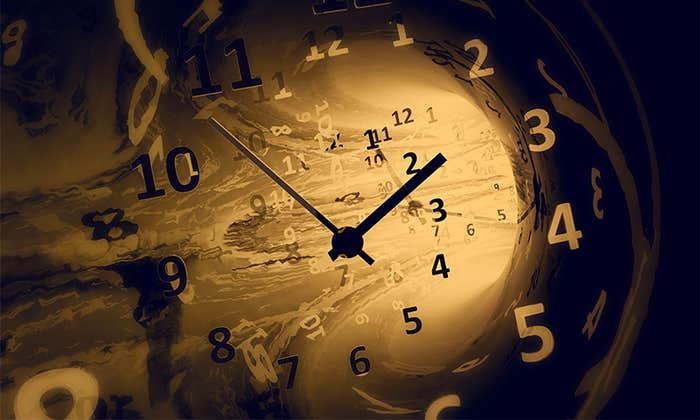
Imagine you are looking at a manhole cover a few paces away on the street. It looks circular, but this is because of some impressive perceptual machinery in your mind. The pattern of light in your eye, on the retina, is, of course, in the shape of an ellipse.
The reason we see a circle, when the eye gets an ellipse, is because of a variety of visual cues and our knowledge of the world. How your mind does this is a fascinating process that has been explored for decades by vision scientists.
But there’s been a lingering question—how long does your mind hold on to the ellipse? There are two extreme views. The first is that the elliptical shape is abandoned early on in visual processing, replaced with belief that the manhole cover is circular, along with its orientation, color, and so on. The other extreme view is that your mind holds on to the elliptical shape, and you simultaneously sense the ellipse while perceiving the circle. Which raises a question philosophers have argued about for hundreds of years: Do we ever escape the perspective from which we view the world?
Perception is full of unimportant information that feels as though it gets discarded.
A recent paper in the Proceedings of the National Academy of Sciences, published in June, suggests that no, we never escape. “We conclude,” the researchers wrote, “that objects have a remarkably persistent dual character: their objective shape ‘out there,’ and their perspectival shape ‘from here.’” In nine experiments, psychologist Jorge Morales, philosopher Alex Bax, and cognitive scientist Chaz Firestone showed that the elliptical image on the back of the eye likely stays with us.
The researchers presented people with images of coins titled at various angles. When viewed straight on, the image on the eye is of a circle. When tilted, an ellipse. People were also shown coin-like images that actually were elliptical. The subjects were shown two at once, and were asked to choose, as quickly as possible, which one was actually the elliptical one.
How does this test whether the ellipse shape on the eye persists in the visual system? Well, when two things are more similar, it takes longer to distinguish them. For example, if you had to choose which letter was a b it would be faster if the other letter were a z and slower if the other letter were a d. The letters b and d look so similar that they compete for your attention. Similarly, imagine you are presented with an actual ellipse, with the other object being an ellipse-shaped tilted coin. If the ellipse persists in your visual system, your decision between the two should be slower, because the coin’s ellipse would distract you from the actual ellipse. If we discard the elliptical eye-image, though, that should keep your decision from slowing down.
But you do slow down! Across all of the experiments, controlling for lots of variables, the researchers found that the tilted coins distracted people and slowed them down from finding the actual ellipse.
The ramifications of this are larger than tilted coins. Perception is full of unimportant information that feels as though it gets discarded. When a light shines on someone’s face, for example, we don’t notice the shadow cast by the nose unless we are specifically looking for it. When people slightly mispronounce words, our minds auto-correct and we hear the word pronounced correctly. This shape-perception study suggests that this information, rather than being lost completely, is still processed, though further study would be required to see if it also happened in these other domains.
This result also raises an important question: If we continue to perceive shapes on the eye, then why is it so hard for us to recognize them? Learning to draw means taking a scene that we see as three-dimensional and representing it on a two-dimensional piece of paper. This is hard to do, which is why drawing in perspective takes practice. A big part of learning to draw involves learning to pay attention to the shapes on our retina.
It could be that although these shapes persist, they are mostly unconscious, and training is required to recognize them for what they are, but even unconsciously-processed shapes can interfere with perception. “Objects are stamped with the perceiver’s perspective,” Morales, Bax, and Firestone conclude. “We do not see the world completely separate from our point of view.”
Jim Davies is a professor of cognitive science at Carleton University and author of Imagination: The Science of Your Mind’s Greatest Power. He is co-host of the Minding the Brain podcast.
WATCH: How the unlikely drives imagination.



























